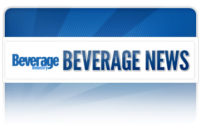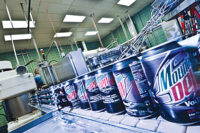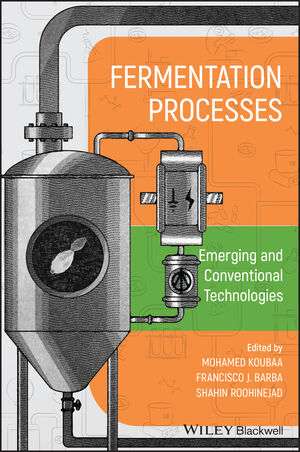Vertical integration gains momentum
Blow, injection molding equipment expands into new beverage categories

Oftentimes, a trend can be linked to one particular outlet. For instance, AOL’s AIM platform was a contributor to the instant messaging trend in the ‘90s. More recently, in the beverage industry, an entire category was responsible for kicking off the trend toward self-manufacturing plastic bottles, says Greg Kershner, president of Inter-Tech Ltd., a multi-disciplined engineering, project management and planning firm based in Atlanta.

|
The bottled water category was the first to adopt the idea of blow molding its own bottles, he says. In this category, bottle cost and lightweighting is paramount, and direct-to-fill production offers solutions to these issues, he notes. It also eliminates many steps — including palletizing, banding, stretch wrapping, storage, shipping, depalletizing and conveying — which can save space in a warehouse and improve efficiency, he adds.
“In the past, plastic packaging companies supplied large- and small-volume bottlers with PET bottles,” Kershner says. “Tractor trailers were crisscrossing the country filled with ‘air,’ delivering billions of plastic bottles to bottle-filling operations from mega plants to small, single-line, specialty beverage operations.”
With sustainability being a top concern for many bottlers, transporting empty bottles negates a company’s “green” efforts, notes Frank Haesendonckx, director of competence center stretch blow molding at KHS, Dortmund, Germany. “Nowadays, most global players take this into consideration,” he says.
Thus, in the past seven years, the trend has shifted to self-manufacturing, Inter-Tech’s Kershner notes. More recently, it has expanded beyond the bottled water market into the carbonated soft drinks category — and soon juice and other hot-fill bottlers are expected to follow suit, he says. This trend applies to beverage companies of all sizes, he notes.
“In the past, only the larger companies were taking advantage of the tremendous cost reductions offered by controlling their bottle manufacturing,” he says. “Today, even companies with volumes less than 1 million bottles annually can realize a payback model that makes sense to the bottom line. Quality equipment is now available with lower initial capital investment costs and operating costs such as one-cavity to four-cavity linear machines, small-capacity high-pressure air equipment and cooling systems, among others. In fact, systems can now be designed that are literally ‘plug and play,’ greatly reducing installation time and start-up cost.”
For instance, Atlanta-based SIPA North America offers the StartBlow blow molder specifically designed to enable companies in emerging markets to enter PET bottle production.
Once companies begin blowing their own bottles, the next step is making their own preforms.
“Today … most major beverage companies have committed to self-manufacturing their own bottles, and, in some cases, the commitment is being made to completely vertically integrate by producing their own preforms as well,” Inter-Tech’s Kershner says.
In the bottled water market, most bottlers make their own preforms, bottles and closures, he points out. Owning blow molding equipment offers bottlers more flexibility and reduces warehouse costs, KHS’s Haesendonckx notes. The cost savings associated with injection molding for making preforms typically is even better than blow molding plastic bottles; however, injection molding typically requires greater volume and 24-hour operation at least five days a week, Inter-Tech’s Kershner adds.
Multiple machines are better than one
In addition to bringing plastic bottle manufacturing in-house, the industry is moving toward more compact systems that combine multiple functions, KHS’s Haesendonckx says. These systems can integrate blow molding with rinsing, filling, capping and/or labeling.
For instance, Sidel International AG’s latest modular generation of PET bottling equipment is its Sidel Matrix system. The equipment includes blowers, fillers, labelers and the Sidel Matrix Combi, which is an integrated blow-fill-cap solution.
“We have drawn from the successes of our existing Combi blow-fill-cap solution and applied significant technological advances,” says Alessandro Paini, vice president of product management for the Hünenberg, Switzerland-based company. “For example, improved commonality between the blowing and filling functions combined with a single operator interface improves control, enhances performance, reduces manual servicing and offers far greater flexibility. It is really about a modular approach, with Sidel Matrix providing beverage producers with the flexibility they need to support consumers in the future.”
Additionally, the system offers bottlers beverage safety and package quality as well as lower operating costs and an improved environmental footprint, Paini says.
“It provides flexible, ergonomic and efficient production with optimum productivity and reduced maintenance,” he adds. “It promises cost-effective, sustainable production in an environmentally friendly solution, with the potential to lower energy and material usage.”
Likewise, SIPA offers integrated solutions, including the SincroBloc blowing-filling-capping system and the SincroTriBloc blowing-labeling-filling-capping system. Additionally, KHS offers the InnoPET BloFill stretch blow molder and filler monoblock as well as the InnoPET BloFill UCF (ultra clean filling) option, which was designed for sensitive beverages such as juice, still water and spritzers, the company says.
Lighten up
Across many beverage categories, bottlers are experiencing requests for lighter-weight bottles, according to suppliers.
“The trend we are seeing among our customers is the request to reduce the weight without compromising the performance,” affirms Denis Marcon, North America sales director for SIPA North America.
To accommodate this reduction in material, blow molders are evolving their options. Sidel has developed the Intelliblower, a self-regulation blowing system that now is part of the Sidel Matrix blowers, designed to provide consistent bottle quality and strength, regardless of bottle weight.
When using lightweight preforms, KHS’s Haesendonckx also notes that a gentle and precise preform feeding system is important. KHS’s Feedmax preform sorter and feed system includes a horizontally arranged Feedflow feed module, which conveys very light preforms to the InnoPET Blomax stretch blow molder quickly and extremely gently, the company says.
As companies continue to downgauge bottles, blow molding equipment is gaining a more significant role, Sidel’s Paini says.
“As bottles get lighter with the ongoing focus on lightweighting, this has resulted in the blow molding process becoming even more important given that poor or irregular material distribution negatively affects quality on the entire production line and can ultimately lead to total production shutdown,” he expounds.
In general, bottlers seek energy-efficient, reliable, flexible blow molding machines that can produce high-quality, potentially lightweight bottles at a low cost, according to suppliers.
Looking for a reprint of this article?
From high-res PDFs to custom plaques, order your copy today!







